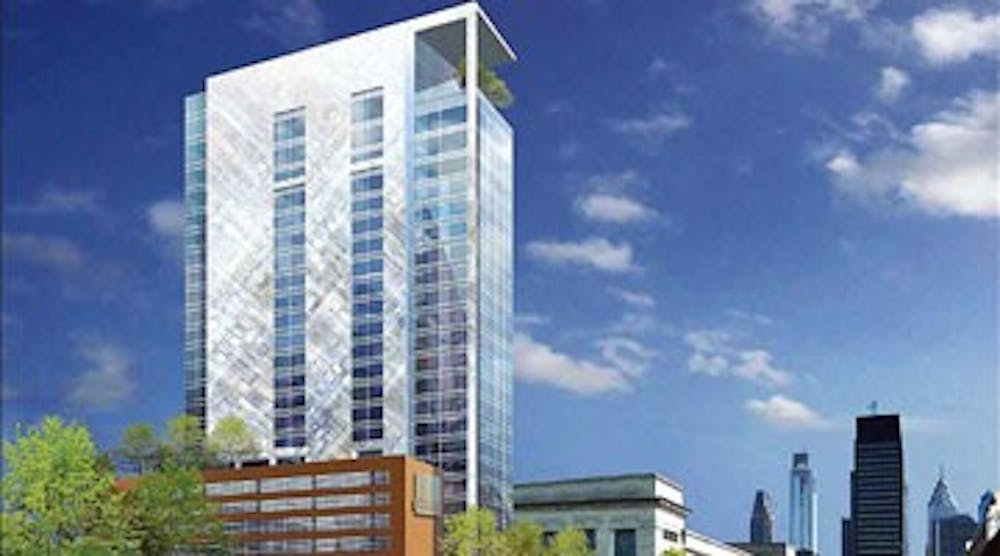Philadelphia is going through a growth spurt, and it's taking University City with it.
As it stands now, the city is one of the smallest among its peers in terms of building height, especially when compared to cities such as New York and Chicago, where skyscrapers abound.
But Philadelphia might make some progress in the coming years, with a number of taller buildings planned for both the Center and University City districts.
Local developer Walnut Street Capital recently announced its desire to put Philly skyscrapers back on the map with plans to build a 1,500-foot tall office building at 18th and Arch streets.
If built today, that building would be the tallest in the western hemisphere.
But the trend of building high in Philadelphia is relatively recent. For the better part of the 20th century, City Hall - at 548 feet - was the tallest structure in the city.
Last year, the nearby Comcast Center became the tallest building in Philadelphia at 975 feet. Architects generally consider buildings taller than 500 feet to be skyscrapers.
But University City - just over the river from downtown - still has to stand on its tippy-toes to look eye-to-eye at its big brother.
Cira Centre, completed in 2005, is the tallest building in the district at 434 feet. It can hardly be considered a skyscraper, but the next-highest structures in the area are the high rises at Penn.
The lack of height in University City is largely due to the history behind the region.
The Schuylkill River's "edge is historically a place of icky industry; neighborhoods are further inland," said Philadelphia Inquirer architecture critic Inga Saffron. "When industries went away, there was no one to stop the highways and railroads from claiming the land."
Saffron added that such structures were major deterrents for significant construction projects along the riverfront.
Still, institutions in the district further from the river, such as Penn, funded high-rise structures - defined as any building exceeding 12 floors - of their own.
University Archivist Mark Frazier Lloyd wrote in an e-mail that dormitories such as the high-rises "were built in the late 1960s as Penn was working very hard to become a residential campus, as opposed to a commuter school."
Lloyd added that Penn has generally tried to construct low-rise buildings, but limited funds and space sometimes made that impossible.
Other factors have recently encouraged local developers to build upward.
"As the value of land increases, this drives structures vertical," said Drexel Facilities Vice President Robert Francis. "Power, water and transportation become cheaper in building higher structures."
The unexpected price increase comes at a time when Philadelphia is losing residents and jobs.
But, Francis said, "with the building of Cira and the implementation of master plan projects at Penn and Drexel, the land has become more valuable" in University City.
There are a number of proposed projects which, if built, would help to form a University City skyline.
The Cira Centre South office tower, expected to be completed in 2012, is slated to become the district's tallest building.
Within a month, Drexel University is expected to announce plans for a 30-story hotel that will be built near 30th Street Station.



